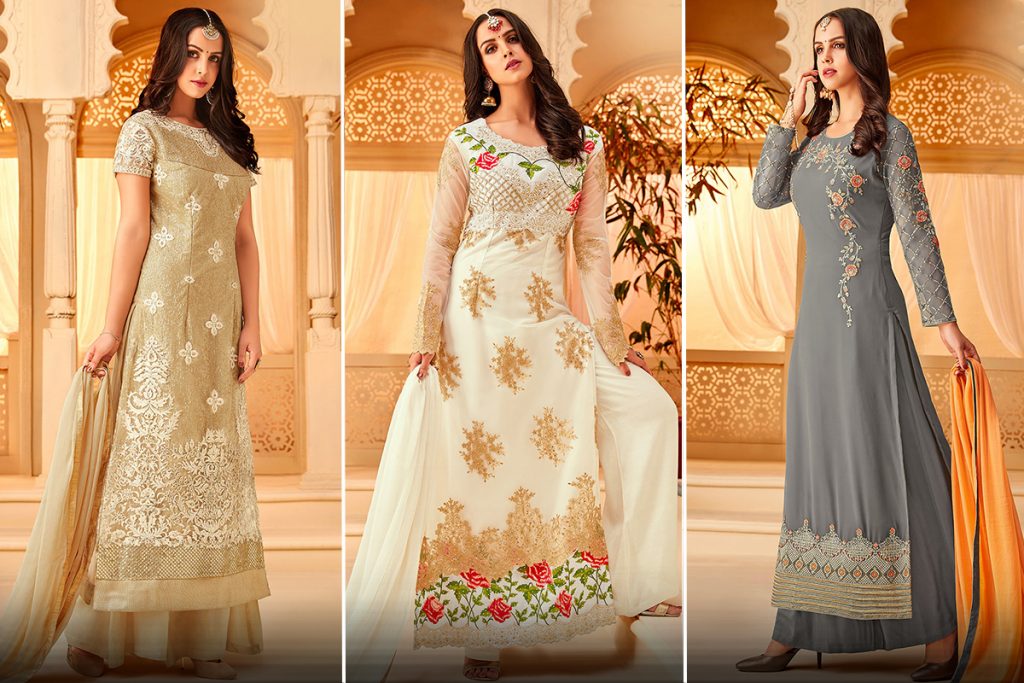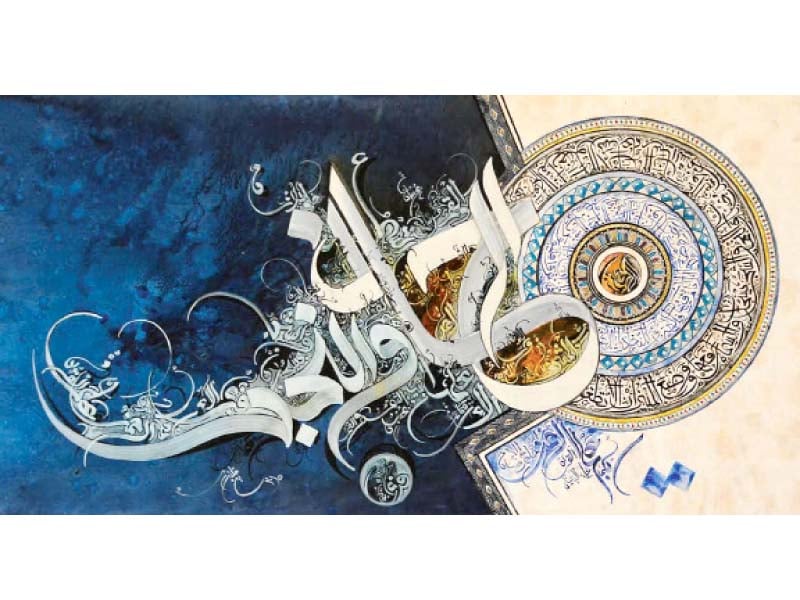Brief Description Of Pakistani Embroidery:
Pakistani Embroidery is a centuries-old custom from one age to another. This complicated and bright work of art is an image of the country’s social legacy and promoted from one side of the planet to the other. In this article, we will investigate the experiences and various styles of Pakistani weaving, the materials and devices utilized, and the meaning of this artistic expression in contemporary Pakistani society.
History of Pakistani Embroidery:
Pakistani Embroidery has a rich history traces back to the old Indus Valley Civilization, which thrived quite a while back. Archaeological unearthings have uncovered proof of weaving on earthenware, mud dolls, and different curiosities from this period. The artistic expression continued developing throughout the long term, with impacts from other societies and civic establishments that controlled the area.
During the Mughal period in the sixteenth and seventeenth hundreds of years, weaving thrived and turned into a significant fine art in the illustrious courts. The Mughal heads were benefactors of human expression, and weaving was no particular case. Fine art arrived at new levels during this period, with perplexing plans and examples made by ace embroiderers.
Pakistani Embroidery Variety in styles:
Pakistani Embroidery is a multifaceted art with distinct local styles that mirror various regions’ topography, culture, and customs. Each type recounts its own story and addresses the embodiment of its district.
1. Kashmiri embroidery
Kashmiri embroidery, frequently called “Kashida,” its sensitive and elaborate themes. It reflects the stunning scenes and lively culture of the Kashmir Valley. The utilization of gritty varieties, complicated models, and fine join make a visual orchestra that is both relieving and captivating. Kashmiri wraps, specifically, are a demonstration of the expertise and imaginativeness of this locale.
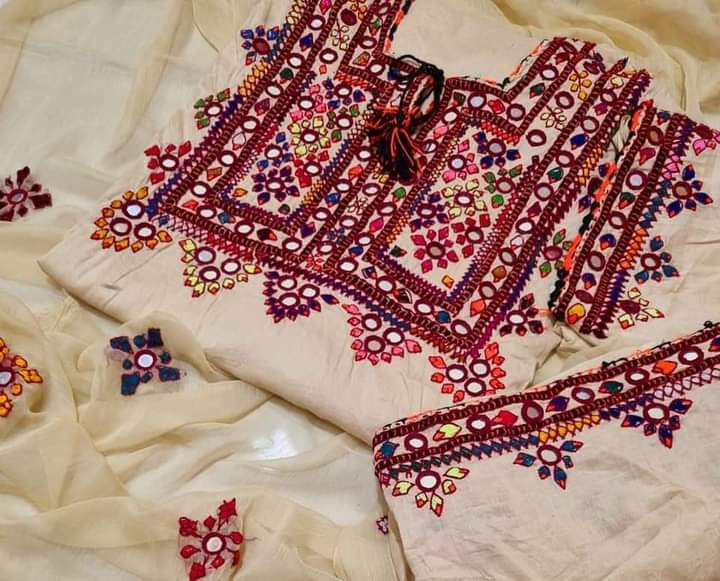
2. Sindhi Weaving
With its bone-dry scenes and rich history, Sindh has its exceptional weaving custom. Sindhi Embroidery is described using mirrors, dynamic crochet, and mathematical shapes. The perplexing itemizing is an impression of the desert culture and the strength of individuals. The striking and energetic examples, frequently found in Sindhi dresses and home stylistic layouts, praise the locale’s rich legacy.
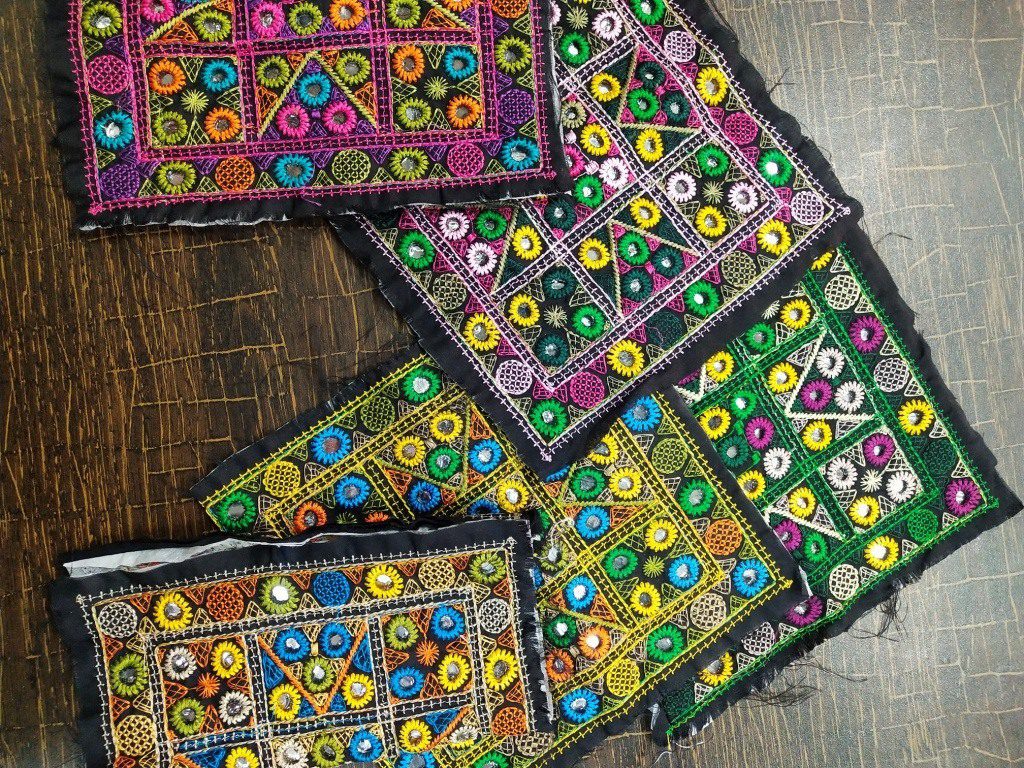
3. Balochi Embroidery
Baluchistan, the most significant region of Pakistan, brags about its apparent style of Embroidery. Balochi Embroidery is described by its utilization of splendid and differentiating colors, multifaceted examples, and reflected work. The craftsmanship isn’t restricted to clothing yet stretches out to adornments, similar to the well-known Balochi covers and decorated sacks. Balochi weaving embodies the district’s raveling way of life and ancestral customs.
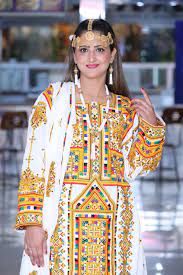
4. Punjabi Phulkari
Punjab, known for its rich grounds and lively culture, has its weaving custom called “Phulkari,” which means “blossom work.” The sign of Phulkari is its utilization of energetic, striking tones and examples. It highlights mind-boggling botanical themes, ordinarily made with a running line. This style has become an essential piece of Punjabi culture, embellishing everything from cloaks and headscarves to home stylistic themes.
5. Multani Embroidery:
Multan, a city saturated with history, due to its Multani embroidery. This style frequently integrates mathematical examples and themes the area’s engineering roused. Multani weaving is known for its accuracy and tender loving care, making stunning examples on autofire, especially ladies’ dresses.
Art and Strategies:
What makes Pakistani Embroidery exceptional is the careful art that goes into each piece. Gifted artisans spend their time and mastery to make these complex plans. Most Pakistani weaving ended the hard way, which adds an individual touch and a feeling of association with the piece.
1. Zardozi
One of the most lavish types of Pakistani Embroidery is Zardozi, which utilizes metallic strings, sequins, and dots. It confers a glorious and extravagant hope to pieces of clothing. By and large, Zardozi adorned dress for honorability and sovereignty. The point-by-point and work-escalated process have made Zardozi weaving a fine art inseparable from plushness.
2. Aari Work
Aari is portrayed by its delicate chain fastens that make elaborate examples. The Aari works with a particular needle, known as an “aari,” to make these fragile plans. This type of weaving broadly utilized in making complicated designs on attire, mainly wedding wear.
3. Mirror Work
Mirror work is a characterizing component of Sindhi and Balochi weaving. Little bits of reflected glass are carefully sewn in texture, making a play of light and reflections. The mirrors add an ornamental viewpoint and fill a practical need by keeping the wearer cool in the cruel desert sun.
4. Crochet and Appliqué
Multifaceted crochet and appliqué methods are the foundation of numerous weaving styles in Pakistan. CraftCraftsmenize various fasteners and strings to make elaborate examples. Appliqué includes sewing bits of texture onto a base texture to make differentiating and bright plans.
Getting Through Excellence:
In a world set apart by quick style and short short-livederns, Pakistani Embroidery remains a demonstration of getting through magnificence and the significance of safeguarding social legacy. The charm of Pakistani weaving goes past its feel; it lies in the worth it adds to the texture, a consequence of the meticulous work of gifted artisans of the most noteworthy parts of Pakistani Embroidery is its flexibility. While saturated with custom, it consistently converges with contemporary design. Creators inside Pakistan and worldwide have embraced these conventional styles, integrating them into current attire and overcoming any issues between the old and the new. Marriage wear frequently includes complicated weaving, making it a crossroad of conventional weddings. Also, Pakistani architects have taken these customary procedures to the global stage, where they are valued for their multifaceted craftsmanship and social importance.
Safeguarding Social Legacy:
Saving the specispecialityakistani weaving is critical to shielding the social legacy of the country. CraftCraftsmenhave dominated these strategies much of the time, the torchbearers of their provincial practices, and their work is fundamental in keeping these customs alive. Associations and drives in Pakistan work to help these craft crafts, matching them with a stage to exhibit their abilities and guaranteeing their work is valued and remunerated decently.
Besides, Pakistani weaving has been perceived by UNESCO as a feature of the immaterial social legacy of humankind. This assignment highlights the meaning of these weaving styles, not exclusively to Pakistan but to the world overall.
Conclusion:
Pakistani weaving is something beyond a speciality and is a living demonstration of the locale’s rich history and social variety. The art of Embroidery in Pakistan has risen above time, exhibiting a lively embroidery of strategies, types, and themes, each recounting its account.
It was getting through all the e of Pakistani lies in its capacity to adjust to the constantly impacting universe of design while protecting the customs and craftsmanship that characterize it. As this acceptable art proceeds to develop and earn respect worldwide, it remains an image of Pakistan’s social legacy and imaginative greatness, an immortal fortune that will stay charming for ages to come.
References:
https://mavesapparel.com/blogs/pakistan-fashion-history/the-art-of-pakistani-embroidery
